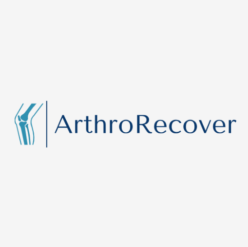| Requirement | Specification | Justification |
| 1.The device must monitor the motion of the knee within a clinically acceptable range of motion (ROM) for rehabilitation. | The device must be able to achieve ROM between 0 and 105 degrees with an accuracy of 土 1.5 degrees | Full knee range of motion is defined as 0 degrees extension to 105 degrees flexion, with electrogoniometers measuring ROM accurately within ±1.7 degrees3. |
| 2.The device must be assistive. | A) The device should exert forces from 5-60N, with a tolerance of 土 5% on the knee. B) Bending moments should stay within 4 N⋅m ± 1 N⋅m in sagittal plane within the specified force range. | In a study on a rehabilitative knee brace, a force of 58.86 N was applied to reduce posterior lag of the posterior cruciate ligament (PCL). The bending moment stayed below 4 N·m, varying by no more than 1 N·m during activity 4. |
| 3.The device must provide thermal energy. | The temperature of the skin surrounding the site of injury will be maintained at a temperature between 38-42°C. | When local heat application between 40-42°C was applied, knee stiffness significantly decreased5. Another study, found that there was a decrease in knee stiffness between the ranges of 38-40 °C when heat was applied6. |
| 4.The device must be able to maintain therapeutic temperature for a specified amount of time. | A) The device should reach therapeutic temperature within 5 minutes. B) The device is able to maintain therapeutic temperature for up to 30 minutes. | A study found applying local heat to the site of injury for 20 minutes lead to a decrease in knee stiffness and pain5. Another study found that knee stiffness decreased when patients had 15-30 minutes of local heat application6. |
| 5.The device must measure temperature. | The device should measure the temperature of the surrounding skin with an accuracy of ± 0.5°C. | An accuracy of ±0.5°C reduces the risk of burn injuries. |
| 6.The device must track data. | A) Repetitions: 1-100 B) Duration: 10-30 minutes C) ROM: 0-105° D) Temperature: 38-42°c | Tracking data allows healthcare professionals to monitor progress and input certain parameters to enhance the patient’s outcome7. |
| 7. The device must store data. | The device will store all data collected in a online database. | Using a web-based storage system allows unlimited storage capacity, real-time backup and accessibility for users and healthcare providers, supporting long-term data tracking. |
| 8. The device must transmit data. | The device will transmit all collected data through the ArthroRecover Website | Data collected will be transmitted at a rate of 0.5 seconds through the Arthro Recover Website, ensuring real-time data transfer, and multiple data points without delays or loss. |
| 9. The device must allow user input. | The users should be able to input and select the desired parameters. | Allowing user input ensures the device can be customized to meet the specific needs of patients and healthcare providers, enabling more effective and personalized therapy. |
| 10. The device must have adjustable straps. | A) The device must have adjustable straps to accommodate different thigh circumferences, ranging from 40-70 cm. B) The device must have adjustable straps to accommodate different knee circumferences, ranging from 30-50cm. C) The device must have adjustable straps to accommodate different calf circumferences, ranging from 30-50 cm. | Sources emphasize the importance of a comfortable fit by accommodating various leg circumferences, ensuring the device fits securely and provides effective support, which is crucial for preventing patient discomfort8,9. |
| 11. The device must automatically shut off in case of malfunction. | The device must automatically shut off when a temperature of 43°C is reached. | The temperature should not exceed 43°C as pain will be introduced10. |
| 12. The device must have a functional manual shut-off button. | The manual shut-off button should be easily accessible. | The device will have a manual shut-off button to allow users to easily disable it in case of emergency, ensuring user safety and control. |
| 13. The device must follow IEC 60601-1 standard for electrical safety. | Within the device the leakage current should be less than or equal to 100 µA. | IEC 60601-1 ensures the device meets electrical safety standards for medical devices, minimizing risks of electrical shock and enhancing user trust. |
